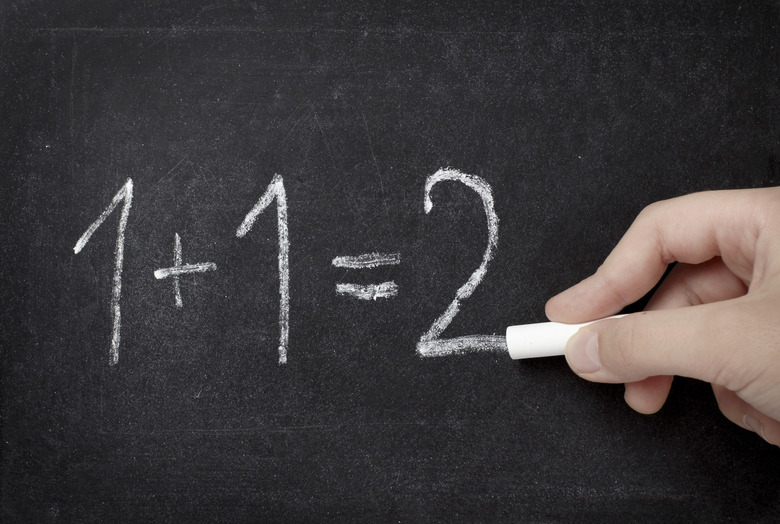Benchmarks To Estimate Sum Or Difference
A benchmark in mathematics is an intuitive tool to help solve a problem. They are most commonly used with fraction and decimal problems. Students can use benchmarks to solve addition and subtraction problems easier without converting or computing fractions or decimals out on a piece of paper or calculator.
Estimation
Estimation
A benchmark helps a student estimate the general number a fraction or decimal number is. For example, a student can quickly learn that the fraction 1/2 means a half, 0.50, or 50 percent because of intuition. However, now that the student knows this process, the student can then estimate if a number is greater or smaller than 1/2. For example, 1/4 (0.25 or 25 percent) can be intuitively considered as less than 1/2, but 3/4 (0.75 or 75 percent) is more.
The Relationship to the Whole
The Relationship to the Whole
Fractions are merely the relationships a part has to its whole. For example, 1/2 is 50 percent or 0.50 of a whole unit. To try to teach children this point, many benchmark exercises are based upon listing fractions in their ascending order toward 1. The fractions 2/5, 1/3, 2/3, and 3/4 can be placed in ascending order using benchmarks. Intuition shows that 1/3 is about 33 percent of 1, while 3/4 is 75 percent of 1. The fraction 2/5 is one more than 1/5, which is 20 percent since 20 times 5 equals 1, meaning 2/5 is 40 percent or 0.40. Finally, 2/3 is greater than 1/3 so it must be 66 percent. The ascending order of the fractions then are 1/3 (0.33), 2/5 (0.40), 2/3 (0.66), and 3/4 (0.75), all leading up to the number 1.
0, 1/2, 1
0, 1/2, 1
Math teachers will inform their students that the best benchmarks to use in their mathematics problems are 0, 1/2, and 1. With these numbers, a student can try to calculate in his head what fractions or decimals are closer to each number. An example may be the decimal 0.01 compared to 0.1. Using the benchmark numbers, a student can know that 0.01 is closer to 0 than 0.1 and hence 0.1 is the larger number. In a subtraction problem then, the students can ascertain that the equation 0.1 – 0.01 = 0.99, is most likely correct because .99 is almost 1.
Quick Estimation
Quick Estimation
Without even changing fractions into decimals, the quickest way to solve some fraction problems is to connect them to 0, 1/2, and 1. For example, if a student receives a problem like 7/8 + 11/12, instead of turning the fractions into decimals and estimating, the student can intuitively know that each one of these fractions is less that 1. That is because 7/8 and 11/12, by definition, are each less than 1. Hence, the solution cannot be greater than 2. Although it does not immediately give the answer, this quick estimation benchmark helps a student know where on the scale the answer should generally be.
Cite This Article
MLA
Fitzpatrick, Mark. "Benchmarks To Estimate Sum Or Difference" sciencing.com, https://www.sciencing.com/benchmarks-estimate-sum-difference-10026878/. 24 April 2017.
APA
Fitzpatrick, Mark. (2017, April 24). Benchmarks To Estimate Sum Or Difference. sciencing.com. Retrieved from https://www.sciencing.com/benchmarks-estimate-sum-difference-10026878/
Chicago
Fitzpatrick, Mark. Benchmarks To Estimate Sum Or Difference last modified March 24, 2022. https://www.sciencing.com/benchmarks-estimate-sum-difference-10026878/
